PERENNIALS > ERIGERON

Elizabeth is a Permaculture Garden Designer, Sustainability Consultant and Professional Writer, working as an advocate for positive change. She graduated from the University of St. Andrews with an MA in English and Philosophy and obtained a Diploma in Applied Permaculture Design from the Permaculture Association.
Reviewed By COLIN SKELLY

Colin is a Horticulturist and Horticultural Consultant with experience in a range of practical and managerial roles across heritage, commercial and public horticulture. He holds the Royal Horticultural Society’s Master of Horticulture award and has a particular interest in horticultural ecology and naturalistic planting for habitat and climate resilience.
Contributions From NICOLA MACNAUGHTON

Nicola Macnaughton is a Professional Horticulturist and Writer. Nicola has completed a two year diploma in Herbology with the Royal Botanic Garden Edinburgh and obtained her Permaculture Design Certificate in Glasgow. She is also a member of the Chartered Institute of Horticulture. Since 2022, Nicola has worked as a Horticultural Consultant for the charity Bearsden in Bloom.
ERIGERON GUIDES
Meixcan Fleabane
Mexican Fleabane is a mat-forming perennial that is great for dry gardens and wildlife attractions.
Learn more about this plant and how to grow and care for it in this guide.
If you have a garden that tends to dry out or a tricky sun-baked spot, Mexican fleabane, Erigeron karvinskianus, could be an excellent choice for a resilient and fairly drought-tolerant ground-cover plant.
It looks wonderful in a rock garden, creeping down the side of stone or brick steps, in cracks on walls or along pathways, and can also suit container growing.
“I love adding ornamental plants like Erigeron karvinskianus, which flowers all summer long, into my container displays,” shares The Bonnie Gardener, Nicola Macnaughton.
Overview
| Botanical Name | Erigeron karvinskianus |
| Common Name(s) | Fleabane, Mexican Fleabane |
| Plant Type | Perennial |
| Native Area | Mexico |
| Hardiness Rating | H5 |
| Foliage | Deciduous |
| Flowers | Daisy-like |
| When To Plant | May-September |
| When To Prune | September-October |
Sunlight
Preferred
Full Sun
Exposure
Sheltered
Size
Height
0.1 – 0.5M
Spread
0.1 – 0.5M
Bloom Time
Summer
Soil
Preferred
Chalk, loam or sand
Moisture
Well-drained
pH
Any
Mexican fleabane is a deciduous flowering perennial in the Asteraceae plant family.1Mexican Fleabane (Erigeron karvinskianus). (n.d.). iNaturalist. Retrieved March 15, 2023, from https://www.inaturalist.org/taxa/76923-Erigeron-karvinskianus
It is native to Mexico and other parts of Central America and has naturalised in a number of other locations around the world.2Mexican Fleabane – Erigeron karvinskianus. (n.d.). Brickfield Park. Retrieved March 15, 2023, from https://www.brickfieldspark.org/data/mexicanfleabane.htm
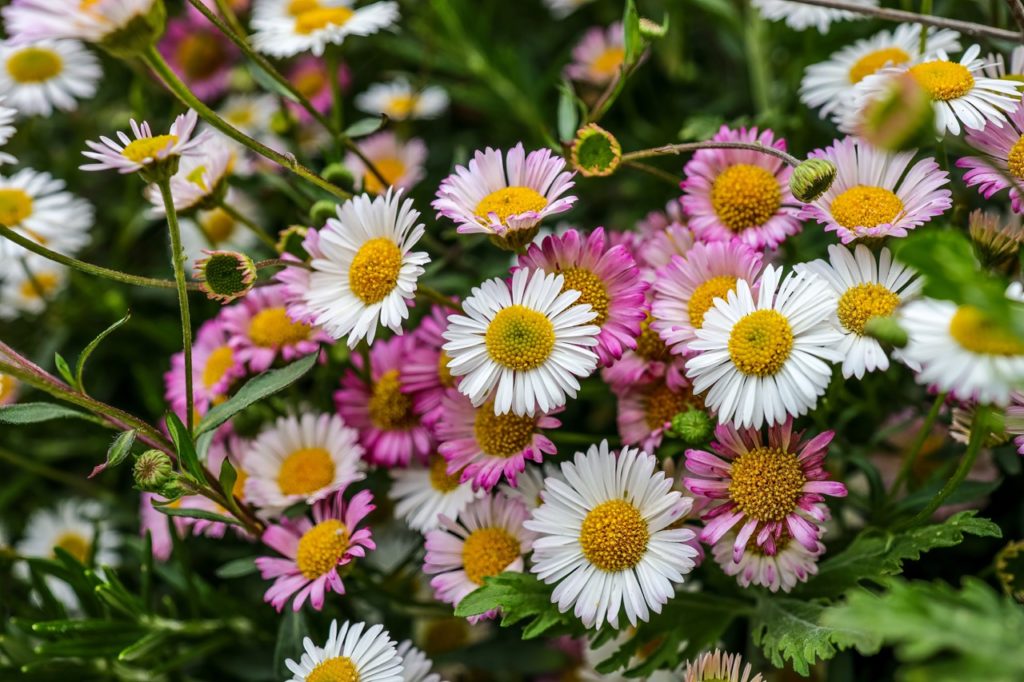
The plant grows from woody rhizomes, spreading out to form mats of hairy, narrow leaves from which daisy-like flowers around 1.5cm wide emerge.
Like lawn daisies, these flowers open with white petals, but they soon develop a pinkish-purple tinge.
How To Grow Erigeron
E. karvinskianus can be purchased and planted out any time between May and September.
It can be placed into planting pockets in a stone wall, in the crevices between paving or used as part of a rockery or other dry-zone planting scheme.
“Erigeron karvinskianus looks really good tumbling down steps or over a wall,” shares Horticultural Consultant Colin Skelly.
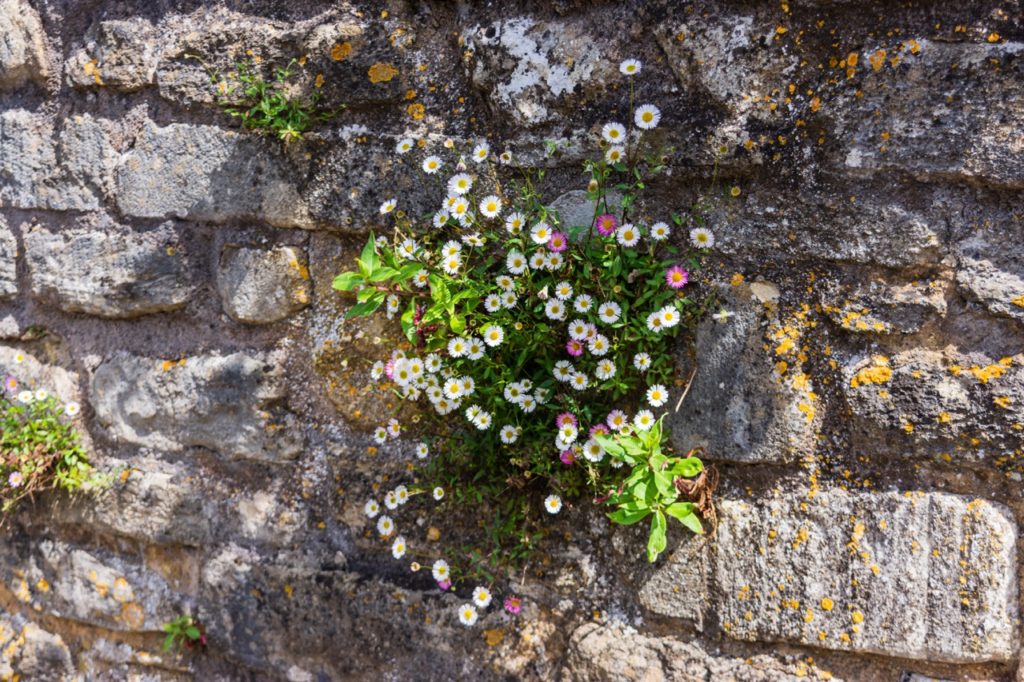
“Once established it will readily self-seed and the challenge is to edit where you allow it to persist.
“Large clumps can be trimmed in early spring to shape and control their growth.”
It can also work very well in window boxes or other containers.
However, this plant is also relatively easy to grow from seed which is a cheaper and more eco-friendly option than purchasing young plants in plastic pots that are often grown non-sustainably in peat potting mixes.
Growing From Seed
The seed of Mexican fleabane can simply be directly sown where it is to grow in the spring.
Scatter the seeds in March or April into the areas of soil between gravel, stones, rocks or paving where you would like them to grow.
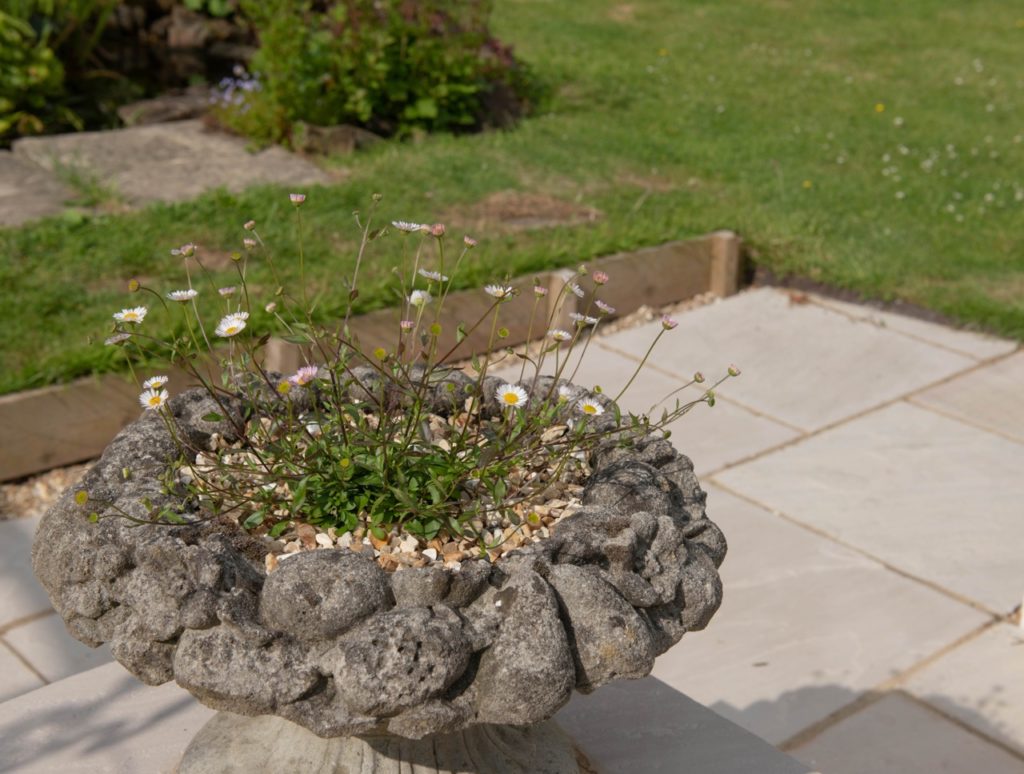
Germination will typically take around 2-3 weeks.
Until they begin to form roots, you can also grow them in a cold frame and then transplant them once they establish themselves.
You can also coat seeds in a small amount of clay and press these into gaps in walls so they can grow and spread over the vertical surface from there.
Ongoing Plant Care
When grown in a suitable spot, Mexican fleabane is a very easy and trouble-free plant to care for.

In fact, where it is very happy, it should be noted that it will self-seed readily and can potentially become invasive, so this is something to consider before you decide to include it in your garden.
Aspect
A south-facing spot will often be ideal, but west or east-facing aspects can also suit this plant.
Light & Temperature
The plant prefers full sun but in particularly scorching spots, it will love a little midday shade.
Soil
Mexican fleabane can be wonderful for any free-draining soil that is moderately fertile and unfussy about soil pH.
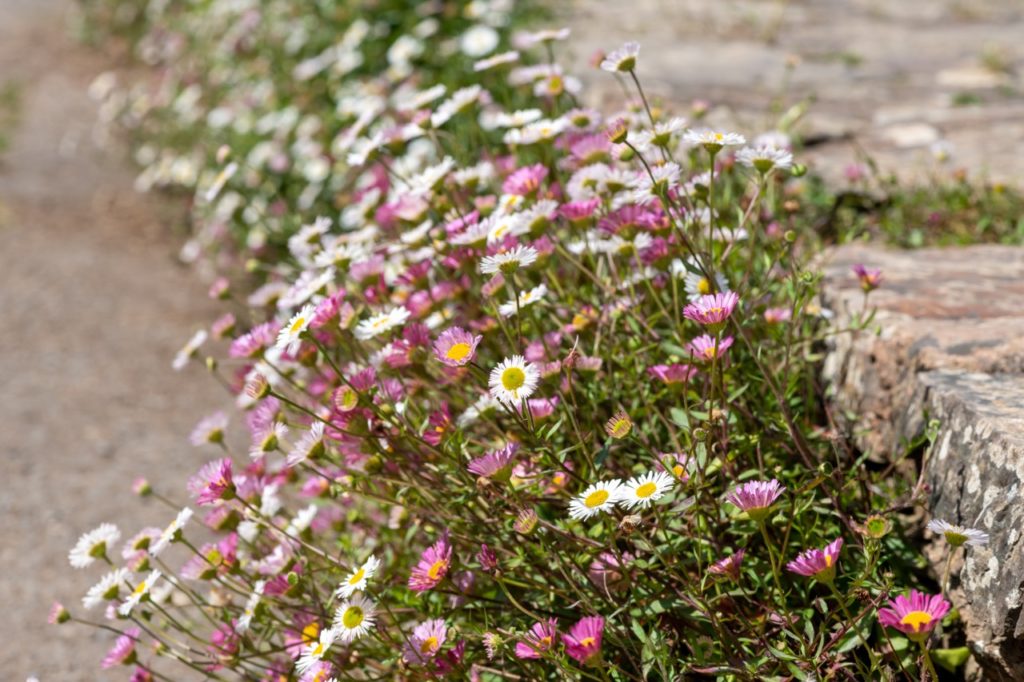
Although the plant is great for drier locations, it will do best in soil or another position that does not entirely dry out in summer.
Fertiliser
Feeding this plant will not usually be required.
However, if the growth seems weak, organic liquid fertiliser can be used every month or so in spring and summer.
Water & Humidity
Though these plants like free-draining soil, it is best to water consistently throughout the summer months.

Let the plant dry out between waterings, but if there is a prolonged dry period, be sure not to let it go thirsty for too long or it may wilt.
Remember that when growing in pots you will likely have to water more frequently.
Container Growing & Repotting
Mexican fleabane is great for free-draining containers or window boxes in a sunny spot.
Simply fill your container with a suitable, free-draining medium and scatter the seeds over the top in spring, and you should be rewarded with a profusion of flowers from May right through to September.

As a relatively slow-growing plant, Mexican fleabane should not require repotting too frequently.
Ideally, repot or transplant container-grown plants when the weather is not too hot and dry.
Pruning & Deadheading
You can deadhead the flowers to promote continued flowering, though this is not really necessary.
In autumn, if the plants are looking straggly, you can also cut back the stems to just above the ground if they do not die back naturally themselves.
Overwintering
The plants will remain dormant over the winter months, dying back in all but the mildest areas, and new growth should emerge in spring.
Propagating
Once you have some Mexican fleabane growing in your garden, you can easily propagate new plants, either by collecting and sowing the seed or by dividing established clumps.
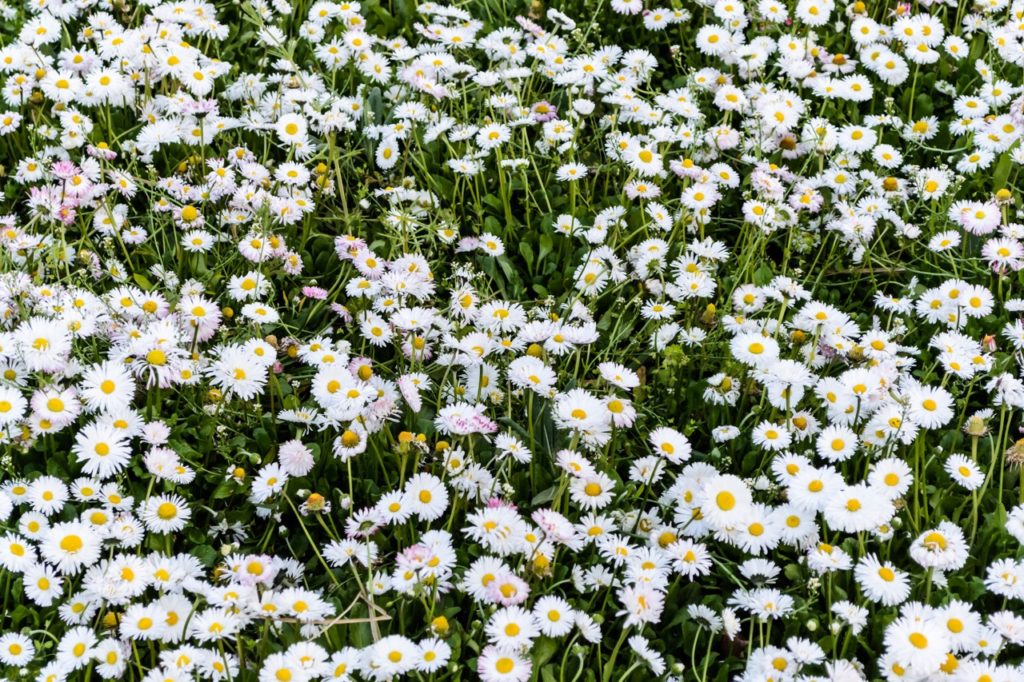
As with seed sowing, division is best done in the spring.
Remember that in many gardens, this plant may also self-seed prolifically.
Common Problems
Generally, you will find that you will not experience many issues with this plant as it is not typically troubled by pests or diseases.
Most problems with die-offs arise because the spot is too damp, or winter waterlogging has occurred.
Companion Planting
Plants that work well with Mexican fleabane include:
- Erigeron ssp.
- Armeria
- Campanula portenschlagiana
- Globularia
- Lithodora diffusa
- Phlox douglasii
- Saxifrages
- Sedums
- Thymes
- Veronica umbrosa
FAQs
Is Erigeron karvinskianus Invasive?

As mentioned above, this plant self-seeds prolifically in mild and suitable areas, so can potentially be invasive in certain places.
Is Mexican Fleabane Considered Hardy In The UK Climate?
Mexican fleabane is H5 hardy, meaning that it is hardy in most places across the British Isles, even when winters are severe.
However, it may not be able to cope with open and exposed sites and could be vulnerable to winter wet (rather than winter cold) in some areas.
References
- 1Mexican Fleabane (Erigeron karvinskianus). (n.d.). iNaturalist. Retrieved March 15, 2023, from https://www.inaturalist.org/taxa/76923-Erigeron-karvinskianus
- 2Mexican Fleabane – Erigeron karvinskianus. (n.d.). Brickfield Park. Retrieved March 15, 2023, from https://www.brickfieldspark.org/data/mexicanfleabane.htm

